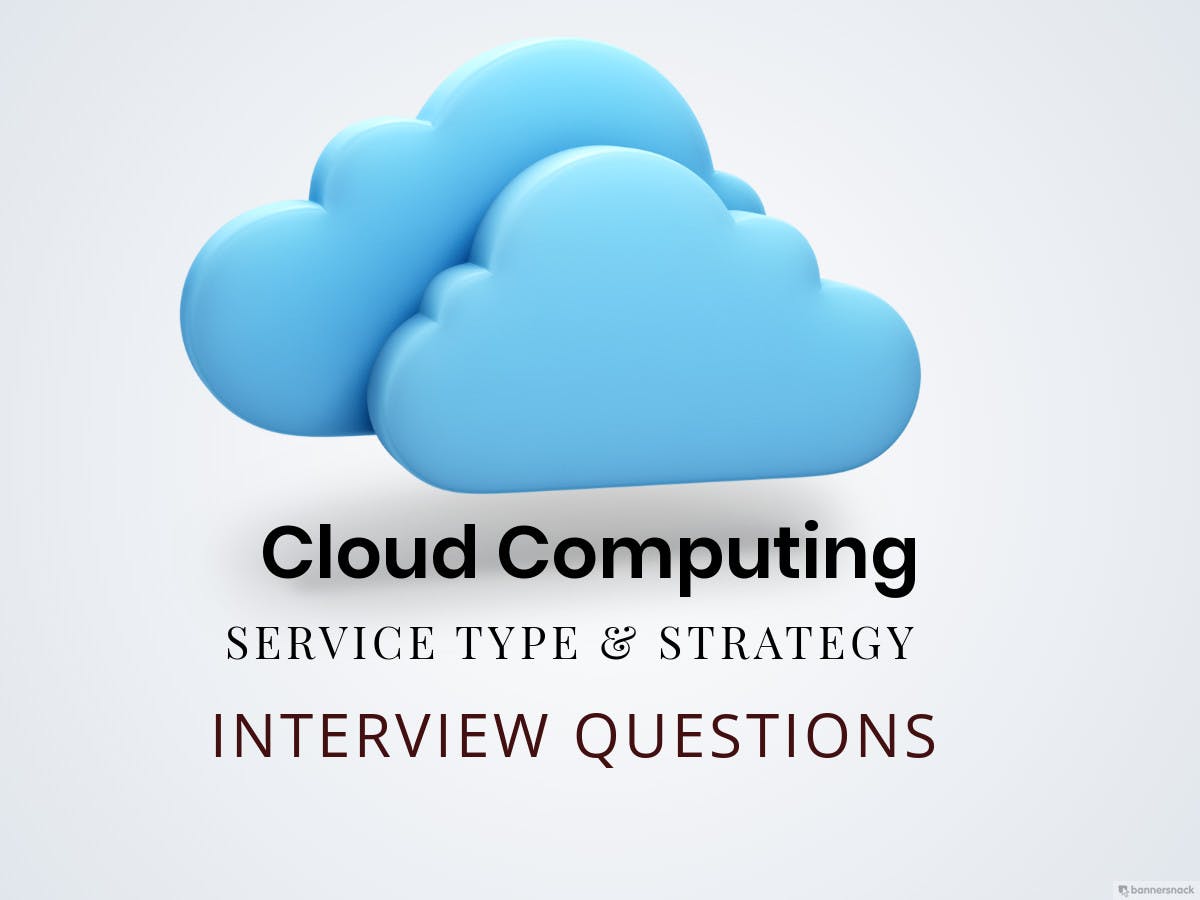Post hidden from Hashnode
Posts can be hidden from Hashnode network for various reasons. Contact the moderators for more details.
Cloud Computing Services Type and Strategy planning
The origin of the term cloud computing is unclear. The word “cloud” is commonly used in science to describe a large agglomeration of objects that visually appear from a distance as a cloud and describes any set of things whose details are not further inspected in a given context. Another explanation is that the old programs that drew network schematics surrounded the icons for servers with a circle, and a cluster of servers in a network diagram had several overlapping circles, which resembled a cloud. In analogy to the above usage, the word cloud was used as a metaphor for the Internet and a standardized cloud-like shape was used to denote a network on telephony schematics.

Later it was used to depict the Internet in computer network diagrams. With this simplification, the implication is that the specifics of how the endpoints of a network are connected are not relevant for the purposes of understanding the diagram. The cloud symbol was used to represent networks of computing equipment in the original ARPANET by as early as 1977,[and the CSNET by 1981—both predecessors to the Internet itself.
Types of cloud computing services:
Infrastructure-as-a-service (Iaas)
This is the basic category of cloud computing. With Iaas, one can rent IT infrastructures like servers and virtual machines, storage, networks, operating systems from cloud provider on a pay-as-you-go basis. Using these service, consumers can control and manage the systems in terms of operating systems, applications, storage, and network connectivity, but are not given access to control the cloud infrastructure by themselves.
Platform-as-a-service (Paas)
It refers to those services which supply an on-demand environment for developing, testing, delivering and managing software applications. This service makes it easier for developers to quickly create web or mobile apps, without worrying about setting up for managing the underlying infrastructure of servers, storage, network, and databases needed for development.
Also, while using this service, consumers can purchase access to the platforms which enables them to deploy their own software and applications in the cloud. In this service, the operating systems and network access are not managed by the users and there are constraints on deploying applications.
Software-as-a-service (SaaS)
It is a method for delivering software applications over the internet, on demand, and on a subscription basis. Using these services, the cloud provider can host and manage the software application and underlying infrastructure. With this service, users can purchase the ability to access and use an application or service which is hosted in the cloud.
A classic example of this is Salesforce.com, as mentioned earlier that the necessary information for the interaction between the user and the service is hosted as part of the service in the cloud.
Also Read An ultimate Guide to Prepare Cloud computing Interviews
Cloud computing strategy planning
In cloud computing strategy planning, a strategy document is prepared according to the conditions a user might face while applying cloud computing mode.
Cloud computing tactics planning phase
Cloud computing tactics planning phase performs the analysis of problems and risks in the cloud application to ensure the users that the cloud computing can successfully meet their business goals. There are four planning steps involved in this phase which are as follows:
Business architecture development: In business architecture development phase, we recognize the risks which might be caused due to cloud computing application from a business perspective.
IT architecture development: In IT architecture development, we identify the applications which support the business processes and the technologies required to support enterprise applications and data systems.
Requirements on quality of service development: Quality of service implies the non-functional requirements such as reliability, security, disaster recovery, etc., where the success of applying cloud computing mode depends on these non-functional factors.
Transformation plan development: In transformation plan development, we formulate all kinds of plans which are required to transform the current business to cloud computing mode.
Cloud computing deployment phase.
The cloud computing deployment phase focuses on both the cloud computing value proposition and cloud computing tactics planning phase. This phase involves the following two steps:
a. Cloud computing provider: This step involves selection of a cloud provider on the basis of Service Level Agreement, which defines the level of service the provider will be able to meet.
b. Maintenance and technical service: These services are provided by the cloud provider along with ensuring the quality of services.
